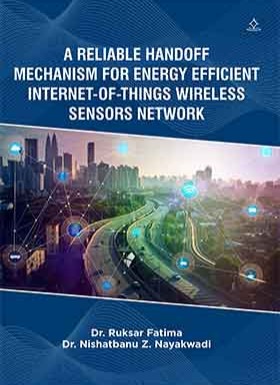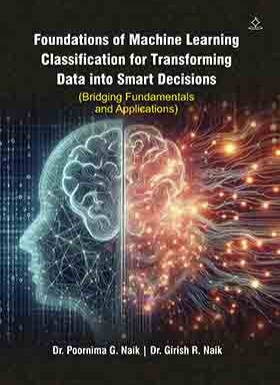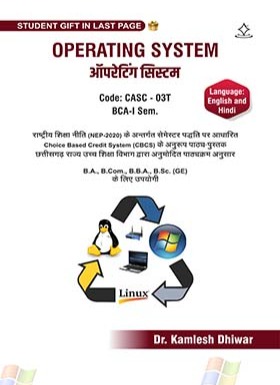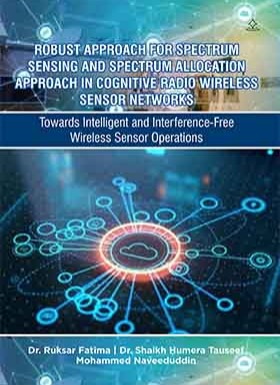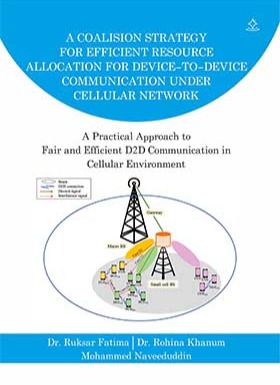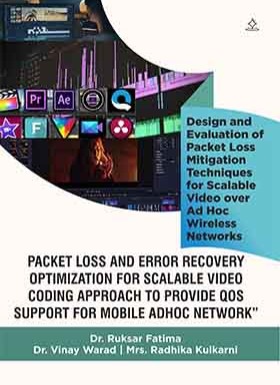About Book
Enhancing Seamless Connectivity and Intelligent Resource Allocation for Next-Generation IoT Systems
The explosive growth of smart applications and Internet of Things (IoT) devices demands a future-ready communication framework that delivers high bandwidth, ultra-low latency, seamless handovers, and optimized resource usage. This book presents a comprehensive solution to mobility management and network resource optimization through the integration of LTE sub-6 GHz and mmWave technologies—a crucial step in building reliable and high-performance heterogeneous wireless networks (HWNs).
Addressing key challenges such as beam coverage issues, interference, and energy-efficient handovers, this research introduces:
The Mobility Aware Handover Execution (MAHE) algorithm using the XGBoost machine learning model, achieving significant improvements in handover success rate, reduced signaling overhead, and better throughput.
The Resource Optimized Network Selection (RONS) method, designed to minimize handover failures and enhance Quality of Experience (QoE) through intelligent, load-balanced resource allocation for users of varying priorities.
Through detailed experiments and analysis, the book demonstrates how machine learning-based models can revolutionize connectivity in dynamic, real-time IoT environments—making it essential reading for researchers, engineers, and practitioners in the fields of wireless communications, network management, and smart IoT infrastructure.
Key Topics Covered:
LTE-mmWave handover optimization
Machine learning-based prediction for handover success
Energy-efficient mobility support for IoT
Load balancing and QoS/QoE trade-offs in HWNs
Interference-aware resource selection techniques
About Author
Author 1:Dr. Ruksar Fatima is a dynamic researcher and academician with a deep passion for advancing intelligent wireless communication systems. Her expertise lies in heterogeneous wireless networks, mobility management, resource optimization, and the application of machine learning in next-generation networks.
With a strong foundation in engineering and a commitment to solving real-world challenges in IoT-based environments, Dr. Fatima has contributed impactful research that bridges the gap between theoretical innovation and practical implementation. Her work is particularly recognized for its focus on improving handover success, reducing energy consumption, and optimizing quality of service (QoS) in dynamic wireless infrastructures.
As the author of this book, she brings forward a thoughtful and technically sound approach to solving some of the most pressing problems in the domain of Cognitive Radio, LTE-mmWave integration, and intelligent resource allocation. Her work not only contributes to academic advancement but also provides valuable insights for industry professionals and researchers working toward smarter, more reliable, and energy-efficient wireless networks.
Known for her academic dedication, research acumen, and humble personality, Dr. Ruksar Fatima continues to inspire young minds in the field of modern wireless communication and intelligent network design.
Author 2: Dr. Nishatbanu Z. Nayakwadi is a highly accomplished and professional academician, known for her sharp intellect, research excellence, and dedication to innovation in engineering and technology. She earned her Doctorate from Visvesvaraya Technological University (VTU), Belagavi, one of India’s most esteemed technical institutions.
With a strong background in advanced wireless communication, intelligent systems, and cutting-edge technologies, Dr. Nayakwadi has consistently demonstrated a passion for research and a commitment to academic rigor. Her scholarly work reflects a deep understanding of complex technical domains and a drive to contribute meaningful solutions to modern challenges.
Recognized for her professionalism, analytical acumen, and academic leadership, Dr. Nishatbanu continues to be a role model for students and a valued contributor to the research community. Her contributions aim to inspire and influence the future of intelligent systems, IoT integration, and next-generation network technologies.
